On August 24, 2016, a magnitude-6.2 earthquake hit central Italy, leaving nearly 300 people dead and many more still missing. The quake, which took place 60 miles north of Rome, severely impacted towns like Amatrice, Accumoli, Arquata del Tronto, and Pescara del Tronto. This month, Louisiana also experienced floods that damaged more than 60,000 homes and killed 13 people. These recent tragedies are unfortunate reminders of the harsh destruction that natural disasters have on our world. However, we are resilient and when our community falls, we work hard to rebuild and live life anew. Here, a list of some of the biggest natural disasters to hit the world since 2010 and how the communities are doing today.
Ecuador Earthquake, 2016
Photo courtesy of Flickr/UNICEF Ecuador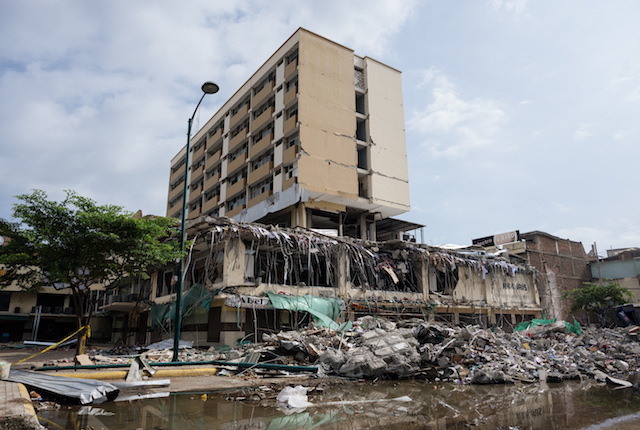
On April 16, 2016, an earthquake with a magnitude of 7.8 hit Ecuador, leaving 660 dead and 7,000 buildings, including schools, offices, and homes, completely destroyed. The United Nations Office for the Coordination of Humanitarian Affairs estimated that over 750,000 were affected by the earthquake, and as of this month, 28,000 people are still living in temporary shelters. Since the event, the rubble has been cleared in most places, leaving vacant lots ready for rebuilding. The government is still assessing the damages of those buildings and homes that remain standing. Some will be repaired, while others will be demolished.
Local tourism took somewhat of a hit following the destruction, as most areas impacted by the earthquake were coastal towns in the northwest region, which are often visited by Ecuadorians. However, the earthquake doesn’t seem to be stopping international tourists from visiting the country’s popular destinations like Quito, which felt the quake, and the Galapagos Islands. Ecuador has estimated that they’ll need about $72 million to fix the damage.
Chennai Floods, 2015
In December 2015, Chennai, India suffered from flooding — the worst to occur in the region in over 100 years. Some experts say a combination of poor city planning, an improper water drainage system, illegal construction, and 19 inches of rain were responsible for the deadly aftermath. In some places, the water was chest-high. In addition to killing a staggering 300 people, the floods also caused severe damage to homes, businesses, and cars.
Eventually, the waters receded and life in Chennai began anew. Today, desilting efforts and canal cleaning are underway. Sadly, realtors are enticing people to build homes on low-lying areas that would be harshly affected if floods were to occur again. The Greater Chennai Corporation is creating rainfall preparedness booklets for officials in each city zone. These booklets will provide emergency contact numbers, which schools and buildings can be used for relief efforts, and a storm water drain map.
Nepal Earthquake, 2015
Photo courtesy of Flickr/Domenico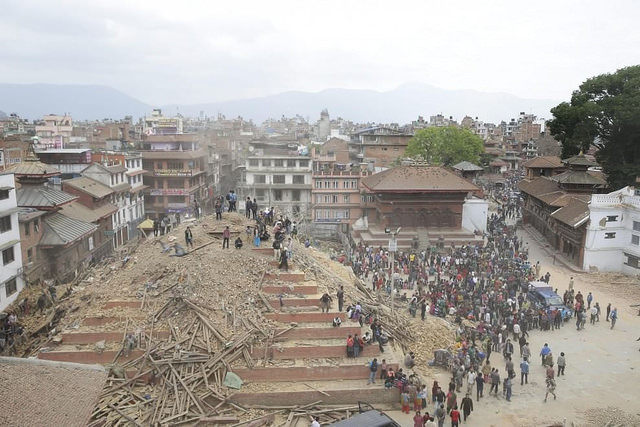
In April 2015, Nepal was hit by a magnitude-7.8 earthquake that reached parts of China, India, and Bangladesh. It resulted in 8,000 deaths, 22,000 injured, and eight million affected, making it the worst natural disaster to hit the country in 80 years. From shattered temples to ruined homes, the destruction was evident. It’s estimated that over half a million homes were destroyed by the quake. It also set off a domino-effect of landslides and an avalanche on Mount Everest, both of which took lives.
A year after the event, the rubble has been cleared from the roads, but not taken away. Businesses have opened. An estimated $6.6 billion will be needed to rebuild. And although the country received a lot of donations and funds, political turmoil and red tape has prevented the Nepalese from pushing forward with much of the reconstruction effort. Most of the ruined homes have not been rebuilt, so many still live in temporary dwellings. The government stopped providing drinking water and sanitation is poor. Since the earthquake, tourism decreased by over 72 percent.
Hurricane Odile, 2014
Photo courtesy of Flickr/Ricardo CA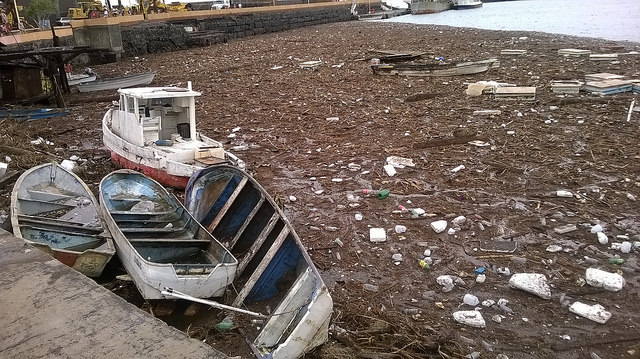
In September 2014, Hurricane Odile became the strongest hurricane to hit Mexico’s Baja California peninsula. Winds raged up to 125 miles per hour, clocking it in as a Category three hurricane. The damage was most prominent in Cabo San Lucas. Five people died from floods caused by the hurricane and 135 were injured from hotels and buildings collapsing. In the aftermath, the city was without drinking water and 30,000 tourists had to be airlifted to safety. Many of the resorts opened as early as a week after. Within a year, the airport was redesigned, beaches were restored, and hotels reopened.
Hurricane Sandy, 2012
Photo courtesy of Flickr/DVIDSHUB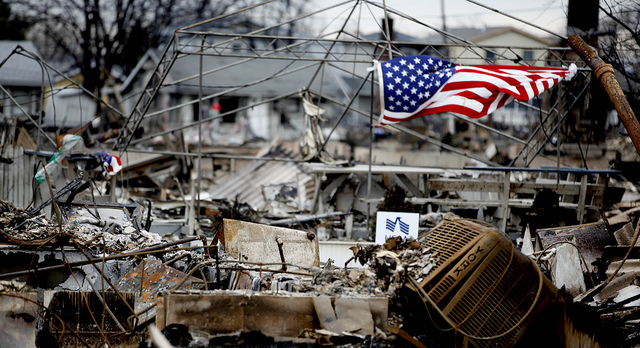
Hurricane Sandy swept through the Caribbean and East Coast of the U.S. from October to November, leaving 149 dead. Destruction varied as the storm waxed and waned between a Category one, two and three. In the U.S., it hit New Jersey with 80-mile per hour winds that destroyed homes. Water flooded through the streets on the East Coast and left eight-and-a-half million people in 15 states without electricity. Flights and public transportation were cancelled and federal offices and the New York Stock Exchange were closed.
Following the storm, 9,000 people were left temporarily homeless and had to stay in Red Cross shelters. There were also gas shortages and rationing. The storm cost New York $41.9 million in damages and is ranked as the second costliest tropical cyclone on record. Two years after the hurricane, the rubble had been cleared, but there were still empty lots. By 2015, 1,217 New York City homes were completed, with most expected to be done by 2016. The South Ferry subway station, which was destroyed in the storm, won’t open until 2018. In New Jersey, reconstruction started a bit slower, but is moving at a steady pace now. By 2015, all but one of New Jersey’s boardwalks had been rebuilt.
Tohoku Earthquake and Tsunami, 2011
Photo courtesy of Flickr/Akinori Yamada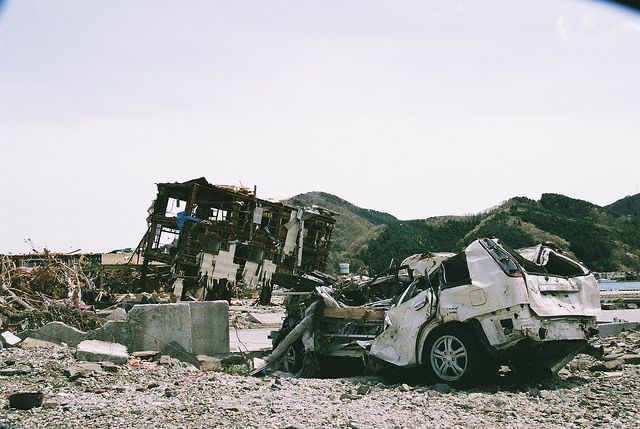
Japan is no stranger to earthquakes or tsunamis, but it was devastatingly crushed by two in March 2011. The Tohoku magnitude-9.0 earthquake lasted for about six minutes and produced a savage tsunami. It was the fourth largest earthquake to be recorded and the worst in Japan’s history. It even shifted the earth on its axis.
There were over 15,891 deaths that resulted from this natural disaster plus 45,700 buildings and 230,000 vehicles that were destroyed. With waves that reached 128 feet high and as far inland as six miles in some areas, most of the deaths were a result of drowning. Today, 2,500 people remain missing.
The tsunami also caused a cooling system failure in Japan’s Fukushima Daiichi nuclear power plant, which released radioactive material into the Pacific Ocean and still had leaks up until 2013. Today, there’s a 12-mile evacuation zone around the plant.
Many of the buildings and debris have been swept away, but road repairs are still underway. Power and phone lines are still being fixed and over 245 miles of sea walls were put up in the last five years. An estimated 12,000 people are still living in damaged homes, according to Team Ohkan, a volunteer group. Others live in temporary housing and have yet to move back to their coastal hometowns. With Japan hosting the Olympics in 2020, there is a renewed effort to amp up the reconstruction in affected areas. Prime Minister Shinzo Abe has promised to speed up decontamination from the Fukishima plant, reopen the northern railroad that was destroyed, and triple tourism in the north.
Haiti Earthquake, 2010
Photo courtesy of Flickr/RIBI Image Library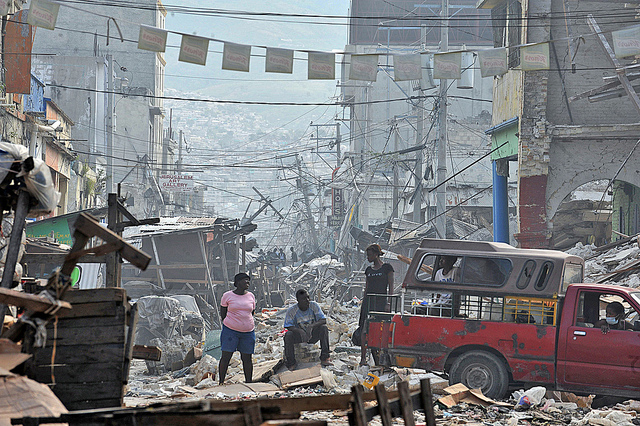
It has been six years since the 2010 Haiti earthquake and the country is still feeling the effects. On January 12, 2016, Haiti was hit by a devastating magnitude-7.0 earthquake that killed 300,000 people, according to the government (disparities may make the number closer to 85,000 to 160,000), and displaced one-and-a-half million others. Port-au-Prince, the capital and most populous area, was hit the hardest.
Many buildings lacked the proper codes or reinforcements to survive an earthquake. Following the quake, over a million were homeless. Supplies weren’t well distributed, hospitals were unusable, and rescue efforts ceased quickly. Mass graves and corpses in the street were not unheard of. In addition, a cholera outbreak occurred during relief efforts.
Two years after the disaster, only half of the rubble had been cleared from Port-au-Prince and half a million people still lived in tents. By 2015, some progress had been made — at least 88 percent of children returned to school and thousands of homes were rebuilt. By 2016, the number of displaced was at 62,000.
Related Stories:
- What to Do When Travel Disasters Strike
- 5 Health Disasters That Are Resurfacing Around the World
- How to Survive a Road Trip in a Storm
And be sure to download the brand-new Oyster.com app!
All products are independently selected by our writers and editors. If you buy something through our links, Oyster may earn an affiliate commission.